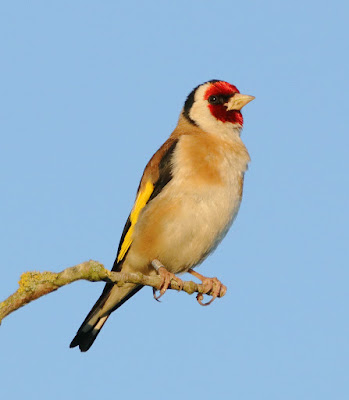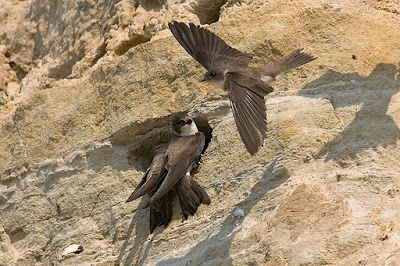We had a drop of rain on Friday; the first here for several weeks, just a few showers that barely wet our parched, straw coloured lawn and briefly dampened the roof tiles. By Saturday morning we were back to sun and blue skies but I rather hoped that the scattered showers had produced a different bird or two as the birding of late has been rather predictable.
So I hit Micawber Road at the usual unearthly hour in the hope that something might turn up. Naturally I headed for Conder Green, one of the most productive of local birding sites and where a couple of extra places are but a stone’s throw away to make for an often satisfying circuit.
It was good to see up to 20 Swifts hawking insects over the surrounding hedgerows this morning. That’s probably as good a count as anyone has had this year.
July sees the first Kingfishers returning to the pool. They breed close by along the canal or the associated River Conder. “River” is something of a misnomer since the waterway resembles the final throes of a babbling brook rather than a mighty river. I was more than pleased to see three Kingfishers today, a family group that stuck close together but stayed distant from the camera. Sorry for the poor images. Today wasn't the most productive in the picture stakes but you get the idea.
Like many other species, Kingfisher families stay together for a week or two after the youngsters fledge so that the inexperienced birds learn from the parents about growing up and how, where & when to feed. It’s rather like a human family except that kids and teenagers are very slow to learn, always think they know best, and if they ever leave home will likely be back.
The single pair of Avocets still have three good sized chicks ably looked after by their aggressive parents. In turn I watched both adults chase off a Grey Heron, a Little Egret and any number of Redshanks and Oystercatchers.
Other waders noted as 120 Redshank, 18 Oystercatcher, 15 Lapwing, 4 Common Sandpiper, 4 Curlew, 2 Snipe, 2 Greenshank. Smaller stuff – 6 Pied Wagtail, 2 Blackcap, 2 Reed Bunting, 2 Whitethroat and 2 Reed Warbler.
Six Common Terns still around as they vied with the Kingfishers for the prime launch pad into the water below. Three Little Grebes on the water and now just 8 Tufted Duck and another mostly unproductive year for the persistent tufties.
There's still a pair of Common Terns hanging around Glasson Dock and here’s where I found a flock of 18/20 Goldfinches and a healthy number of House Martin nests right in the village centre. The martins fly down towards the dock gates for their building materials and where the tidal flow leaves exposed mud in this driest of summers.
I called into Gulf Lane where a small party of 6/8 Linnets plus 2 Whitethroats suggested it will soon be time to cut that ride for project Linnet.
That’s for another, cooler day.
Linking today to World Bird Wednesday and Anni's Birding Blog.
So I hit Micawber Road at the usual unearthly hour in the hope that something might turn up. Naturally I headed for Conder Green, one of the most productive of local birding sites and where a couple of extra places are but a stone’s throw away to make for an often satisfying circuit.
It was good to see up to 20 Swifts hawking insects over the surrounding hedgerows this morning. That’s probably as good a count as anyone has had this year.
July sees the first Kingfishers returning to the pool. They breed close by along the canal or the associated River Conder. “River” is something of a misnomer since the waterway resembles the final throes of a babbling brook rather than a mighty river. I was more than pleased to see three Kingfishers today, a family group that stuck close together but stayed distant from the camera. Sorry for the poor images. Today wasn't the most productive in the picture stakes but you get the idea.
Kingfisher
Kingfisher
Kingfisher and Common Tern
Kingfishers
Like many other species, Kingfisher families stay together for a week or two after the youngsters fledge so that the inexperienced birds learn from the parents about growing up and how, where & when to feed. It’s rather like a human family except that kids and teenagers are very slow to learn, always think they know best, and if they ever leave home will likely be back.
The single pair of Avocets still have three good sized chicks ably looked after by their aggressive parents. In turn I watched both adults chase off a Grey Heron, a Little Egret and any number of Redshanks and Oystercatchers.
Avocet
Grey Heron
Other waders noted as 120 Redshank, 18 Oystercatcher, 15 Lapwing, 4 Common Sandpiper, 4 Curlew, 2 Snipe, 2 Greenshank. Smaller stuff – 6 Pied Wagtail, 2 Blackcap, 2 Reed Bunting, 2 Whitethroat and 2 Reed Warbler.
Greenshank
Pied Wagtail
Six Common Terns still around as they vied with the Kingfishers for the prime launch pad into the water below. Three Little Grebes on the water and now just 8 Tufted Duck and another mostly unproductive year for the persistent tufties.
Common Tern
There's still a pair of Common Terns hanging around Glasson Dock and here’s where I found a flock of 18/20 Goldfinches and a healthy number of House Martin nests right in the village centre. The martins fly down towards the dock gates for their building materials and where the tidal flow leaves exposed mud in this driest of summers.
Common Tern
House Martin
I called into Gulf Lane where a small party of 6/8 Linnets plus 2 Whitethroats suggested it will soon be time to cut that ride for project Linnet.
That’s for another, cooler day.
Linking today to World Bird Wednesday and Anni's Birding Blog.






































































.jpg)













